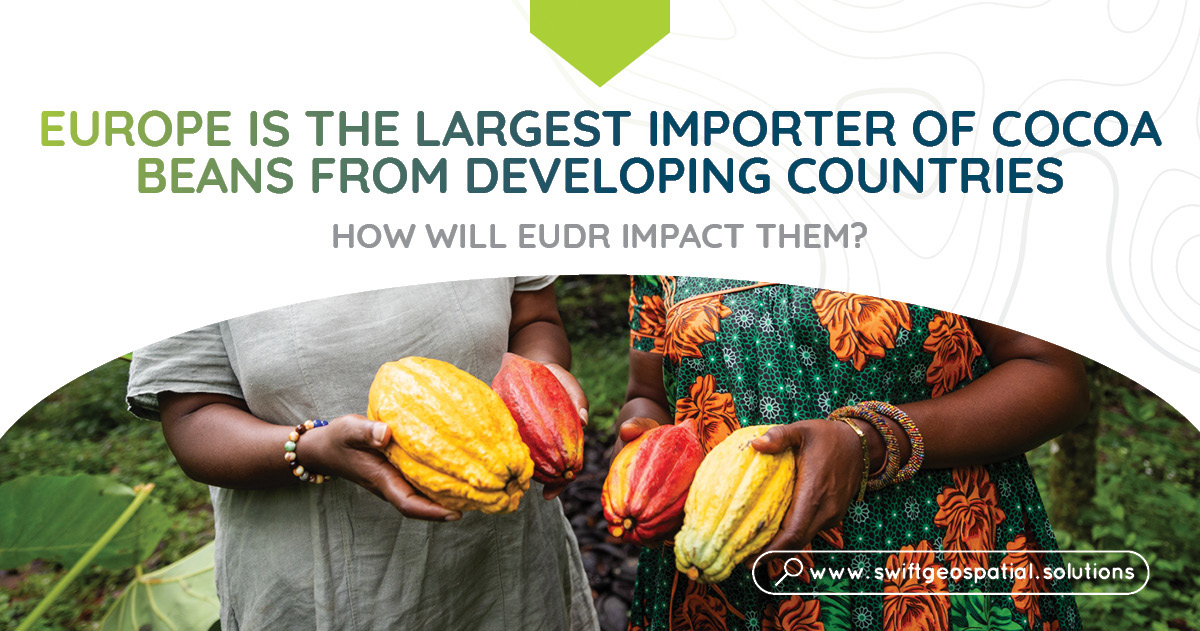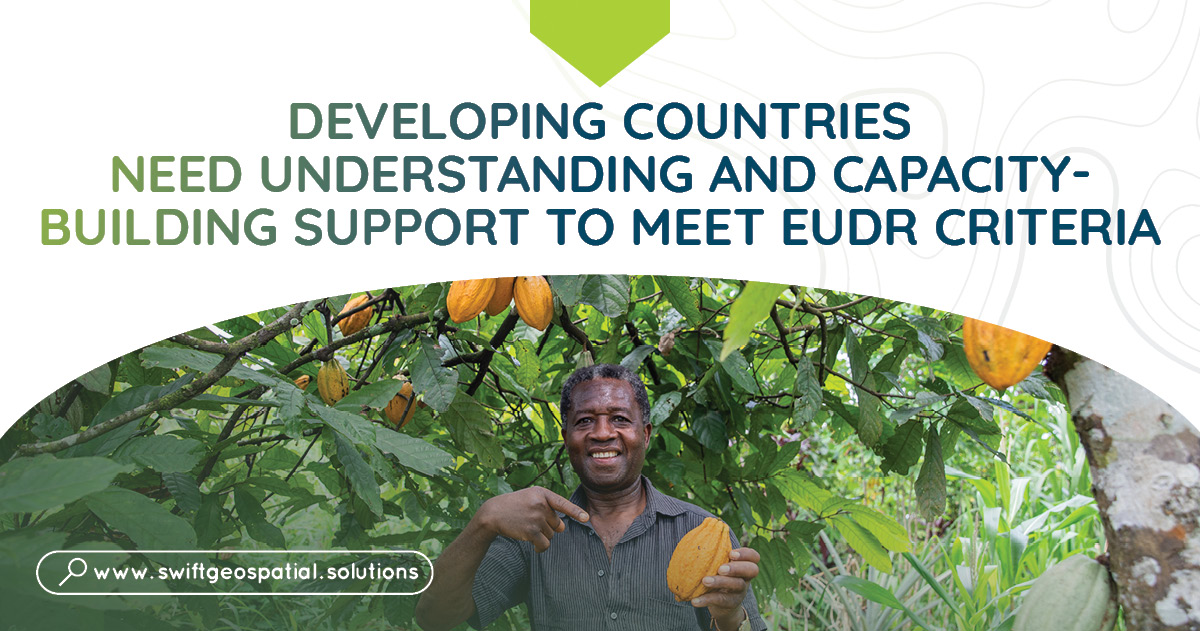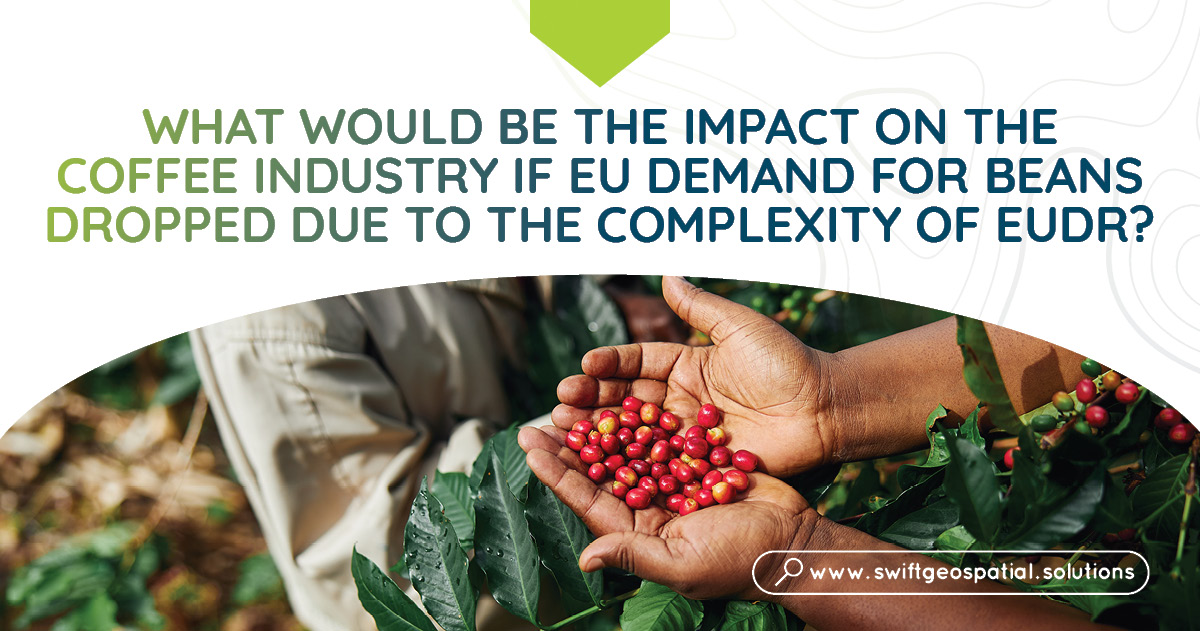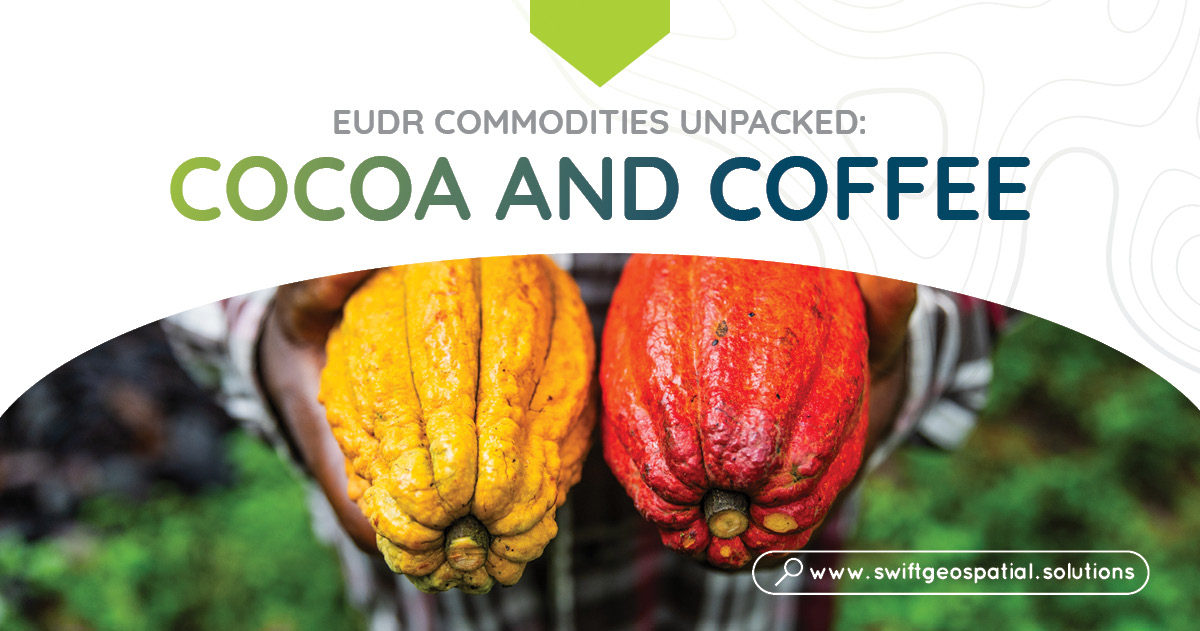The EU Deforestation Regulation (EUDR) aims to promote deforestation-free global supply chains, which will contribute to reducing carbon emissions by at least 32 million metric tonnes a year. This regulation is crucial in better managing and mitigating the production and consumption of some of the biggest imported goods and commodities contributing to global deforestation. Still, it doesn’t come without its fair share of challenges.
Two of the deforestation-linked commodities listed explicitly under EUDR are cocoa and coffee. We go into more detail to unpack why these commodities are listed, their production impacts, and how these regulations affect their production overall and the communities and farmers involved.

The EUDR and cocoa
Accounting for 56% of global imports, Europe is the largest importer of cocoa beans worldwide, with key developing countries such as Côte d’Ivoire, Cameroon and Ghana accounting for the bulk. The need for EUDR in this industry comes down to unsustainable cocoa plantation expansion as demand for cocoa grows, contributing to illegal logging and land clearance on top of biodiversity loss and soil degradation.
Cocoa traceability through geolocation, deforestation risk assessments and due diligence reporting are just some of the measures EUDR requires to certify a commodity as deforestation-free. For smallholder farmers, these measures have been simplified and summarised as follows:
- Do not produce on land that was deforested after 2020.
- Collect GPS data on the production area.
- Communicate with business partners and pass on pertinent information.
- Respect land use and labour rights.
Chief Growth Officer at AgUnity Paul Horsten says that although these measures seem relatively straightforward, many farmers don’t even have access to mobile phones, making data collection difficult, nor do they have direct access to business partners as they often sell to local intermediaries.
As important as these regulations are in curbing deforestation and limiting environmental infractions in the production and consumption of certain imported and exported goods within the EU, they will more heavily impact certain countries in the cocoa sector than others. There is an increased regulatory burden where these regulations are concerned, as well as unforeseen costs and the need for additional resources and industry knowledge. And this burden isn’t just for the producing country but for the European buyer, too.

EUDR and Côte d’Ivoire – a cocoa export example
Côte d’Ivoire exports 59% of its cocoa to the EU, providing an income to almost one-fifth of the population. The risk to the producing country is that EU buyers look to get their cocoa elsewhere to mitigate the legal and financial implications of non-compliance with EUDR. The time needed to successfully implement these regulations and follow through is also prohibitive.
If we look at the general EUDR criteria for imports, producers need to ensure the following:
- commodities and products can be successfully classified as deforestation-free;
- they are produced per the relevant legislation of the country of production; and
- they are covered by a due diligence statement indicating no more than a negligible risk of non-compliance; in other words, the risk of non-compliance is small.
If we continue looking at Côte d’Ivoire and consider the legal production of the commodity (bullet two), we already run into an issue.
According to a Client Earth research paper, “the definitions of deforestation and forest degradation in the EUDR are not based on Ivorian legislative definitions, which may imply that legal deforestation, i.e. deforestation permitted under Ivorian law, contravenes the requirements of the EUDR.” The opportunity for confusion and incorrect interpretation is rife.
When we add to this some of the other EUDR requirements – like tracing products back to farm level with express GPS coordinates to ensure they are deforestation-free – producers also face challenges like limited financial resources and stunted technical capabilities due to basic aspects like internet access and mobile phone as mentioned earlier. A lack of governmental coordination and access to data, on top of poverty pressure and other concerns like child labour, and you can see how there are numerous ways in which producing countries and regions – particularly in the developing world – may fail to comply with these criteria.

Developing countries and regulatory ambiguity
There are already 17 developing countries concerned with the impact of EUDR’s “one-size-fits-all” approach, states satellite monitoring company LiveEO. Developing countries need time to not only understand these regulations but also require “capacity-building support” to prepare properly and ensure EU buyers do not overlook them due to lack of readiness, says Maria Naranjo, researcher at Wageningen Economic Research.
According to the regulation, a benchmarking survey will categorise countries and regions across three deforestation risk rankings – low, medium and high. However, this classification is only scheduled to be finalised by the European Commission in December 2024 which means ambiguity for producing countries until then. Each classification level comes with due diligence steps that either need to be completed in full, or that can be completed in part depending on this risk ranking.
For example, a low-risk country or region may only need to collect evidence of product traceability, that it was produced deforestation-free and that it was produced per the country’s law. A higher-risk country or region has a longer list of requirements, including risk assessments, mitigation plans and more. But what about unique circumstances? In the EUDR it appears there is no “room for tailor-made solutions based on national forestry concerns” says Client Earth, which means this one-size-fits-all approach is inevitable, potentially excluding producers from the supply chain as they battle to conduct risk assessments and implement mitigation measures all while dealing with the constraints mentioned earlier – financial, political and others.

Coffee exporters are also feeling the regulatory pressure
Exporters of coffee to Europe are also facing regulatory pressure much like cocoa. European importers sourced approximately 86% of their green coffee beans directly from producing countries in 2021, equalling 3.1 million tonnes. And, much like in the case of cocoa, most of this comes from developing countries such as Ethiopia, Kenya and Uganda.
In a recent article by Reuters, leading German roaster Dallmayr, which buys about 1% of the world’s exported coffee “sees no way of buying significant quantities of Ethiopian coffee going forward” due to the cost and difficulty of complying with the EUDR. According to an EU-Coffee action document, coffee accounts for over 30% of Ethiopia’s total exports, and supports over 4.5 million smallholder farmers. The risk to livelihoods across the supply chain is clear.
If large EU buyers continue to withdraw from developing countries, they stand to lose not just financial backing but also regulatory knowledge and support, which could exacerbate the negative consequences of coffee growth, which include deforestation, soil erosion, and water pollution as producers become more desperate.
Something else to consider as pointed out by Coffee Intelligence is the complex nature of the coffee supply chain. There are numerous intermediaries peppered throughout, from the production site to final export, and holding each one accountable (often with evidence required by EUDR) may not always be practical. Corruption, lack of legal acumen and sometimes even computer access and digitalised record-keeping all pose additional challenges.
Capacitating producing countries with the right digital tools and knowledge will go a long way in driving EUDR compliance and saving producers from fines of up to 4% of their turnover. Compliance in turn will help avoid a mass exodus of buyers who will either look to larger commercial farms or new producers which increases costs for importers says Dr. Christian Bunn of the International Center for Tropical Agriculture: “Every new producer has to be trained not only in good agricultural practices, but also in the administrative procedures to comply with the regulation, and needs to be confirmed by satellite monitoring systems.”
EU buyers and producing countries need to work hand-in-hand with regulatory bodies and each other to find a mutually beneficial way forward, all while ensuring that the commitment to reducing deforestation continues.
Is Your Business Ready?
With the approaching EUDR deadline less than 12 months away and well-known repercussions, have you asked yourself if your business is ready to comply? Contact Swift Geospatial; our solutions-based team is looking forward to assisting you with all of your ongoing satellite-based monitoring needs.
The leading event on cocoa sector sustainability
Swift Geospatial look forward to attending and exhibiting at the World Cocoa Conference 2024 in Brussels, Belgium. To be held from the 21st-24th April 2024.
The foremost gathering for the worldwide cocoa and chocolate industry, this event unites every participant in the cocoa value chain. Governments, cocoa farmers, cooperatives, exporters, traders, manufacturers, brands, retailers, financial institutions, logistics companies, international aid and development agencies, academics, and more come together from around the globe. The purpose is to foster dialogue, exchange perspectives, and collaboratively pinpoint solutions for ensuring the sustainability of the sector.


